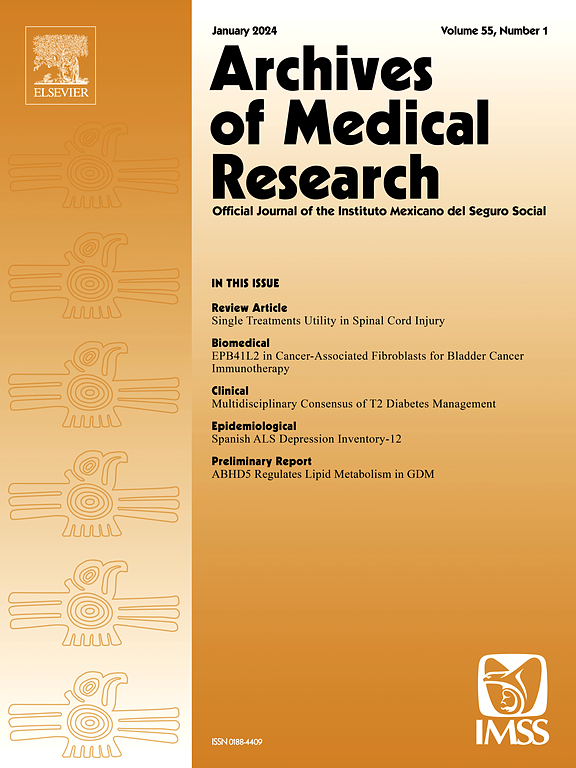senp1通过HIF-1α信号通路调控肝窦内皮细胞促进再生的机制
IF 3.4
3区 医学
Q1 MEDICINE, RESEARCH & EXPERIMENTAL
引用次数: 0
摘要
背景和目的:肝窦内皮细胞(LSECs)在肝脏再生中起着关键作用,但这一过程的具体分子机制尚不清楚。先前的研究表明,Sentrin/ sumo特异性蛋白酶1 (SENP1)在缺氧条件下维持LSECs的分化状态,促进其增殖;然而,SENP1通过调节LSECs促进肝脏再生的作用尚不清楚。方法采用70%肝切除(PHx)小鼠模型,探讨SENP1调控LSECs的分子机制,并在体外和体内观察HIF-1α信号通路对肝脏再生的促进作用。结果首先,我们发现肝脏再生开始于肝切除术后第一天,肝组织中SENP1的表达显著上调。SENP1下调后,肝组织中Ki-67和血管性血变因子(vWF)的表达下降,肝脏再生率下降。其次,在体外,SENP1过表达的LSECs增殖活性增强,并且能更好地维持开窗状态。将肝细胞与过表达SENP1的LSECs共培养后,EdU检测显示肝细胞的增殖能力显著增强。然而,当使用SENP1或HIF-1α抑制剂时,情况正好相反。在体内,我们观察到SENP1可以激活VEGF/VEGFR2/Id1信号轴,通过HIF-1α信号通路上调VEGF和HGF的表达,从而促进肝细胞增殖和血管生成。结论senp1可能通过HIF-1α信号通路调控LSECs促进肝脏再生。本文章由计算机程序翻译,如有差异,请以英文原文为准。
Mechanism of SENP1-Mediated Regulation of Liver Sinusoidal Endothelial Cells to Promote Regeneration Via the HIF-1α Signaling Pathway
Background and Aims
Liver sinusoidal endothelial cells (LSECs) play a critical role in liver regeneration, but the specific molecular mechanism underlying this process remains unclear. Previous studies have shown that Sentrin/SUMO-specific protease 1 (SENP1) maintains the differentiation state of LSECs and promotes their proliferation under hypoxic conditions; however, the role of SENP1 in promoting liver regeneration by regulating LSECs is still unknown.
Methods
We employed a 70% hepatectomy (PHx) mouse model to explore the molecular mechanism underlying SENP1 regulation of LSECs and to observe the promotion of liver regeneration via the HIF-1α signaling pathway in vitro and in vivo.
Results
First, we found that the liver regeneration began on the first day after hepatectomy, while SENP1 expression in liver tissue was significantly upregulated. After SENP1 downregulation, the expression of Ki-67 and von Willebrand factor (vWF) in liver tissue decreased, as did the rate of liver regeneration. Second, in vitro, the proliferation activity of LSECs with SENP1 overexpression increased, and fenestration was better maintained. After co-culturing hepatocytes with LSECs that overexpress SENP1, an EdU assay showed that hepatocyte proliferation ability increased significantly. However, the opposite occurred when either a SENP1 or a HIF-1α inhibitor was used. In vivo, we observed that SENP1 can activate the VEGF/VEGFR2/Id1 signaling axis, upregulating the expression of VEGF and HGF through the HIF-1α signaling pathway, thus promoting hepatocyte proliferation and angiogenesis.
Conclusions
SENP1 may promote liver regeneration by regulating LSECs dependent on the HIF-1α signaling pathway.
求助全文
通过发布文献求助,成功后即可免费获取论文全文。
去求助
来源期刊

Archives of Medical Research
医学-医学:研究与实验
CiteScore
12.50
自引率
0.00%
发文量
84
审稿时长
28 days
期刊介绍:
Archives of Medical Research serves as a platform for publishing original peer-reviewed medical research, aiming to bridge gaps created by medical specialization. The journal covers three main categories - biomedical, clinical, and epidemiological contributions, along with review articles and preliminary communications. With an international scope, it presents the study of diseases from diverse perspectives, offering the medical community original investigations ranging from molecular biology to clinical epidemiology in a single publication.
 求助内容:
求助内容: 应助结果提醒方式:
应助结果提醒方式:


